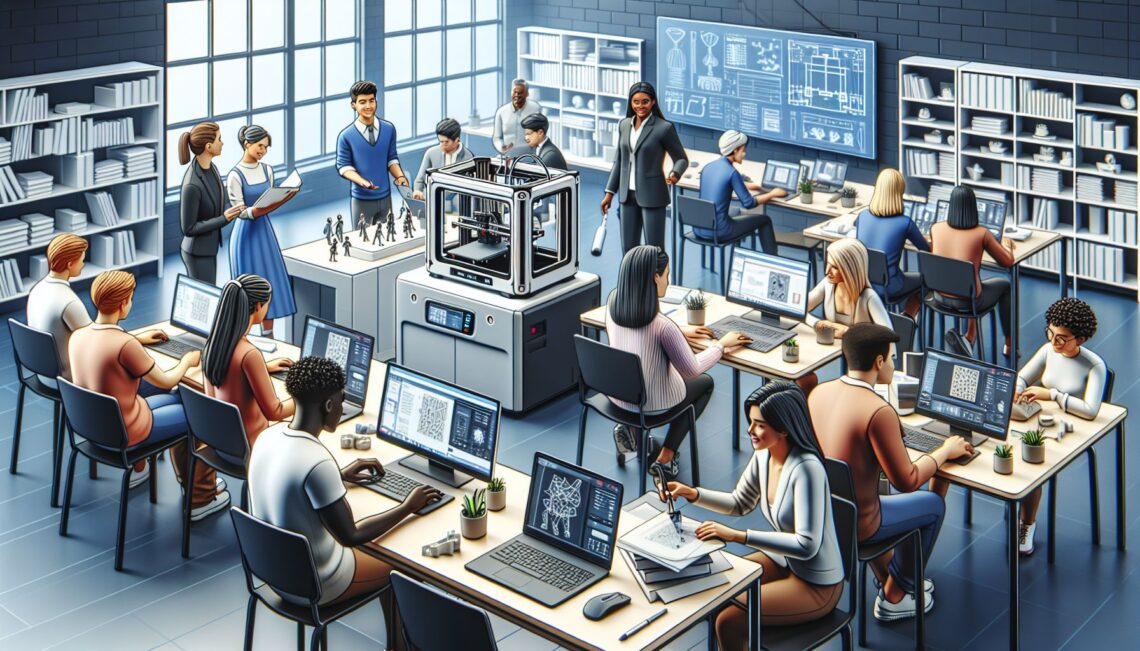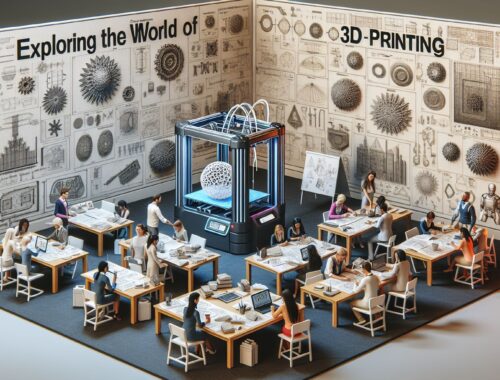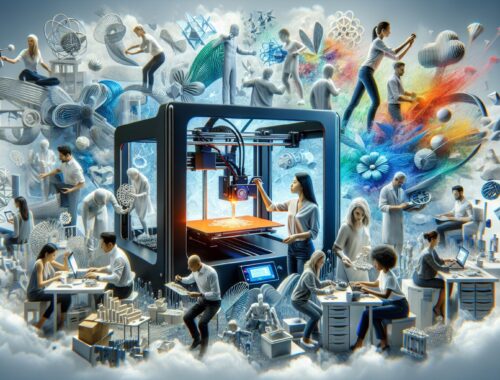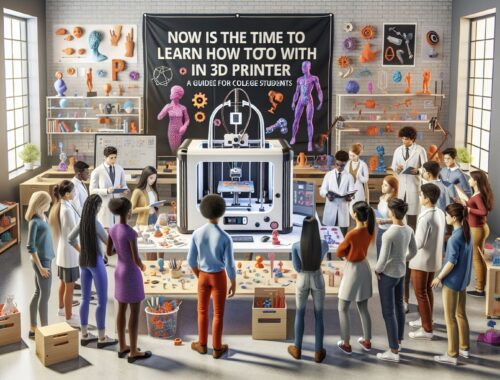
Enhancing College Education Through 3D Modeling and 3D Printing
In recent years, technology has revolutionized various industries, allowing for new and innovative ways to manufacture and create products. One such advancement is the emergence of 3D modeling and 3D printing, which has opened up a world of possibilities for college students in their pursuit of education and creativity.
Introduction to 3D Modeling and 3D Printing
3D modeling is the process of creating a three-dimensional representation of an object using specialized software. This technology enables users to design and manipulate virtual objects with incredible precision and detail. On the other hand, 3D printing is a manufacturing process that transforms those virtual models into physical objects by layering materials on top of each other.
With the advancement of affordable and accessible 3D printers, college students now have the opportunity to bring their ideas to life and explore the various applications of 3D modeling and printing in their educational journey.
Expanding Creativity with 3D Modeling
One of the remarkable aspects of 3D modeling is how it nurtures creativity and imagination. College students can harness 3D modeling software to design toys, sculptures, buildings, or even entire infrastructures. By experimenting with different shapes, sizes, and textures, students can refine their design skills and create visually stunning and functional models.
Beyond aesthetics, 3D modeling encourages critical thinking and problem-solving. Students must consider factors such as structural integrity, material compatibility, and environmental impact when designing their models. These challenges offer valuable learning opportunities as students navigate the complexities of engineering and design principles.
Bridging the Gap Between Theory and Practice
In many fields of study, theoretical knowledge often remains detached from real-world applications. However, 3D modeling and printing provide a bridge between theory and practice, allowing college students to experience hands-on learning in their chosen fields.
For example, engineering students can use 3D modeling to create prototypes of mechanical parts or complex systems before they are physically built. By doing so, students can test the functionality and identify any potential flaws, saving time and resources in the manufacturing process. Furthermore, students can learn from their mistakes and iterate upon their designs, fostering a culture of continuous improvement.
Similarly, architecture students can benefit greatly from 3D modeling and printing. By creating detailed virtual models of buildings, students can explore various architectural concepts, experiment with different materials, and study the effects of light and shadow. This practical approach provides them with a deeper understanding of design principles and helps them develop a portfolio that showcases their skills to potential employers.
Bringing Ideas to Life with 3D Printing
While 3D modeling lays the foundation for creativity, 3D printing takes it a step further by turning virtual designs into tangible objects. This technology provides college students with the ability to manufacture products with their own hands and witness their ideas materialize before their eyes.
For instance, art and design students can use 3D printing to fabricate intricate sculptures or customized jewelry. The process allows them to explore unconventional materials, experiment with different textures, and create truly unique pieces that reflect their artistic vision. By incorporating 3D printing into their artistic practice, students can push the boundaries of traditional art forms and explore new dimensions of creativity.
Moreover, 3D printing has remarkable applications in the field of medicine. Engineering and medical students can work together to develop prototypes of prosthetic limbs, orthopedic devices, or anatomically accurate models of human organs. This collaborative approach enables students to solve real-world medical challenges while gaining a deeper understanding of human anatomy and biomechanics.
Fostering Entrepreneurship and Innovation
3D modeling and printing not only amplify creativity and bridge the gap between theory and practice but also foster the entrepreneurial spirit among college students. With access to 3D printing technologies, students can transform their ideas into marketable products and venture into the world of entrepreneurship.
For example, toy creators can design and manufacture their own unique toys, bypassing the traditional manufacturing processes that often limit innovation. This allows them to bring niche or personalized toys to market and cater to specific customer demands.
Similarly, engineering students with an entrepreneurial mindset can develop prototypes of innovative gadgets or inventions and pitch their ideas to potential investors or tech incubators. The ability to create tangible prototypes with 3D printing greatly enhances their chances of securing funding and turning their ideas into profitable ventures.
Conclusion
The integration of 3D modeling and 3D printing into college education provides invaluable benefits to students across various disciplines. By nurturing creativity, bridging theory and practice, bringing ideas to life, and fostering entrepreneurship and innovation, these technologies contribute to a well-rounded education and prepare students for the challenges of the modern world.
As such, it is essential for colleges and universities to recognize the potential of 3D modeling and printing and incorporate them into their curricula. By equipping students with the necessary skills and knowledge in these emerging technologies, educators empower them to explore new frontiers, revolutionize industries, and make a lasting impact on the world.
You May Also Like

Exploring The World of 3D Printing: A Guide for Educators
April 1, 2024
The World of 3D Modeling and Printing: A Gateway to Creativity and Skills Development
January 7, 2024

